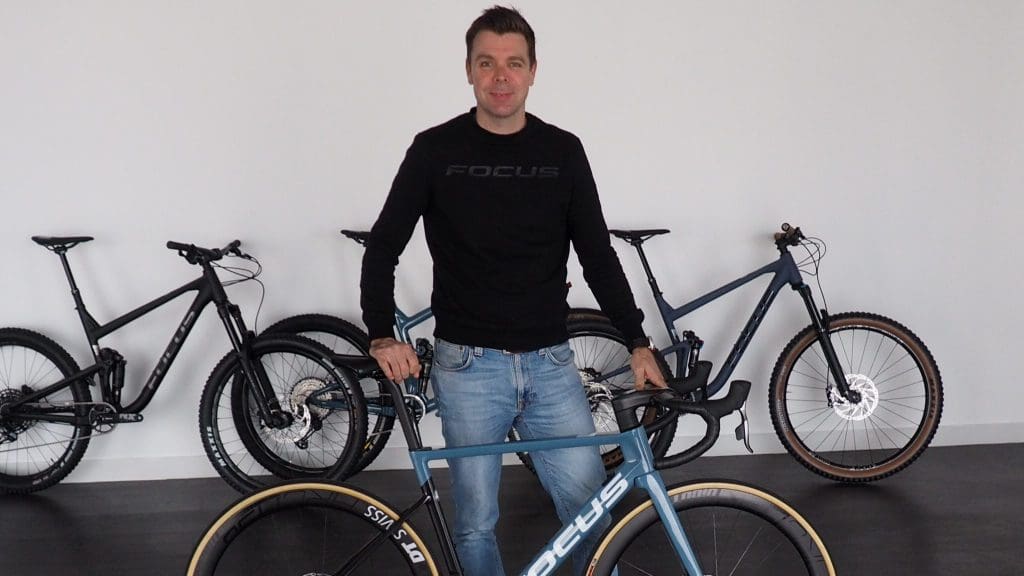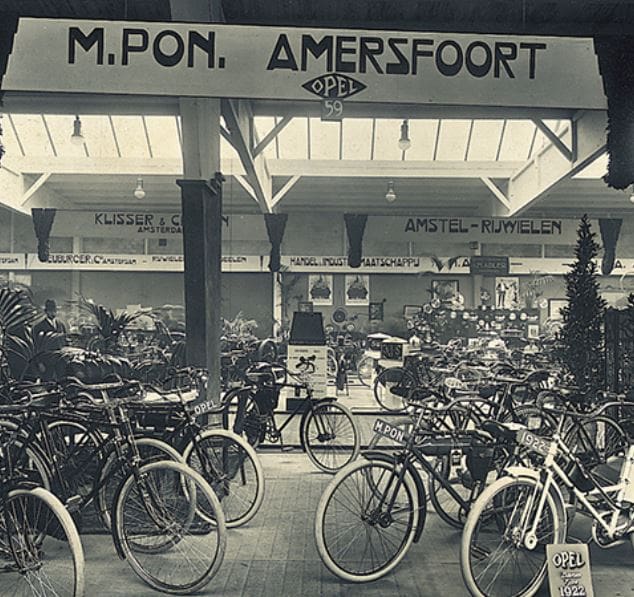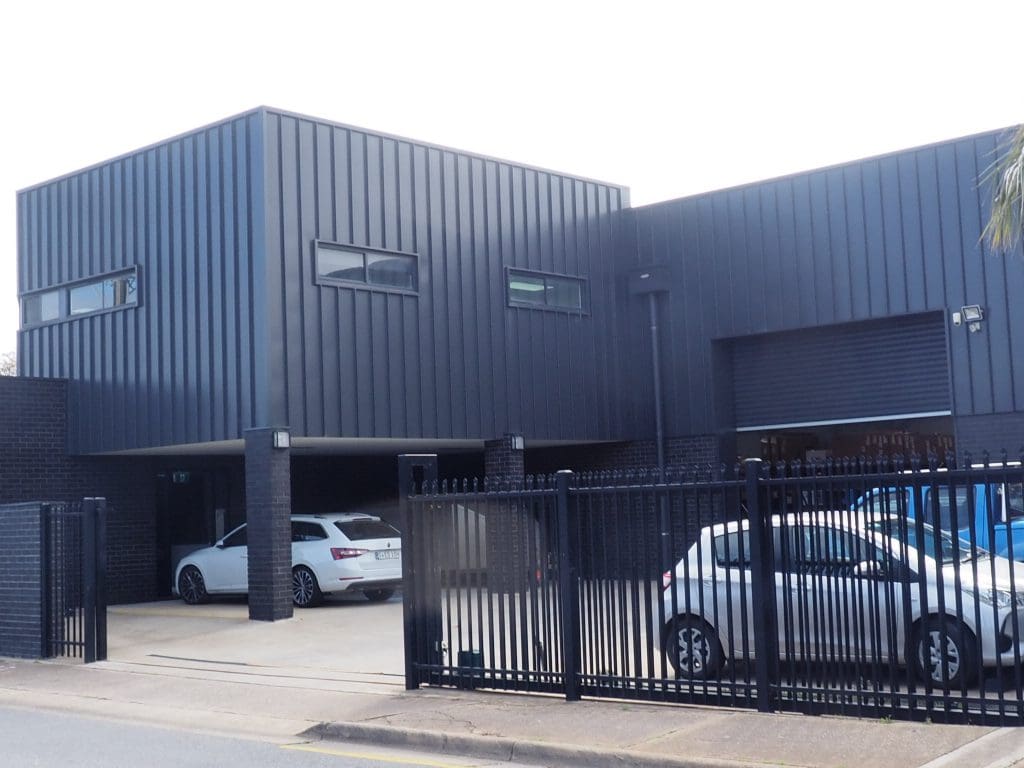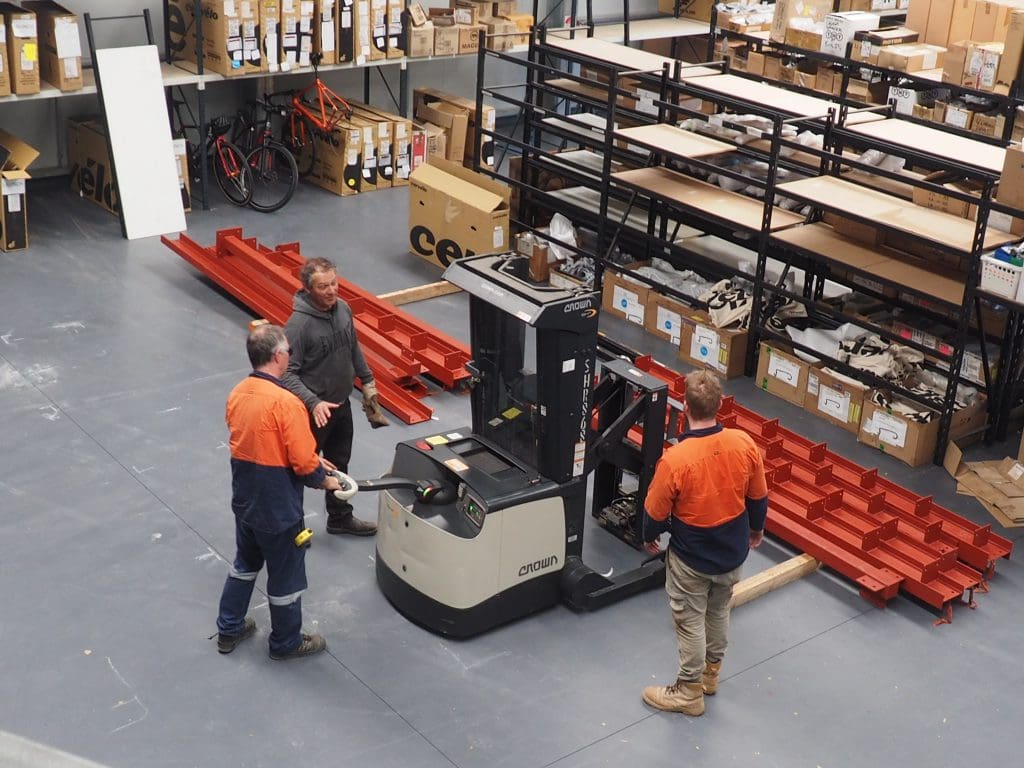Meet Cycling’s Newest ‘Major’


~ Sponsored Content ~
Pon Holdings only started in the bicycle industry eight years ago, but is already one of the global bike industry’s major players.
Pon.Bike Australia has had an equally meteoric rise having just moved into its fourth consecutively larger premises in eight years. We recently caught up with Pon.Bike Australia’s founding CEO, Graeme Moffett as he and his team were still settling into their brand new premises, located in the north western suburbs of Adelaide, South Australia.
Pon is not a well known name in Australia, but according to their global website, they employ 13,000 staff worldwide of which 6,000 are in the Netherlands and have annual sales of 7.5 billion Euros (A$12.33 billion)
Graeme began by telling the story of Pon and how they entered the bicycle industry.
“Pon is a family owned business from the Netherlands, still owned by the Pon family,” he began. “It has always been a trading company. They imported five VW beetles from Volkswagen Germany into the Netherlands, just after World War II. They’ve now been the distributor of the Volkswagen group for over 70 years. It’s the longest running distribution relationship with Volkswagen in the world. They now import so many vehicles that they receive daily train loads of cars via their own train line directly into the Pon facility in the Netherlands.

“Pon is now super diverse, everything from cars to power to ships. They even make valves for the space program out of Houston. Within Australia Pon has other business units relating to mining and valves used in mining.”
Pon’s website says that they respond to trends such as urbanization, electrification, sustainability and digitization, which explains their decision to expand from automotive into cycling.
“Pon.Bike is a business built by acquisition,” Graeme continued. “It started with Gazelle, which was one of the Netherland’s oldest bike brands, but was in trouble when Pon took over. Gazelle now has over 25% market share of the 400,000 plus per year ebike market there. They bought Derby Cycle which in Australia is mainly known for Kalkhoff and Focus. They bought Cervélo, then Santa Cruz and BBB, who are distributed by two very good other distributors in Australia. Pon.Bike Australia distributes Kalkhoff, Focus, Cervélo and Gazelle.
“We have a philosophy within our business that ‘brand is in the lead’, so each brand can decide how they want to sell their product whether in their home market or globally. If you talk about BBB, Mr David Cramer (owner of Bikesportz) has a longstanding relationship with that brand. He built it from scratch here and does a fantastic job.
“With Santa Cruz, it’s very much a culture based decision. Lusty Industries does Santa Cruz. They come from a dirt motorbike culture. They signed distribution for Santa Cruz before Pon bought it and my understanding is that Santa Cruz are happy with the job that they’re doing for them in Australia.
“We have recognised that ebikes are a big part of the future. With the exception of Santa Cruz and Cervélo who don’t make ebikes, they’re the predominance of what we sell for Kalkhoff, Gazelle and fast becoming that way for Focus too, particularly in Europe.
“Across all the Pon.bike companies we’re doing about US$1 billion in annual turnover in the global bike industry (A$ 1.47 billion) and growing. I’ve just got back from Europe where we’ve had one of our best years ever, particularly off the back of the e-comfort and e-MTB bike categories.”
Although Pon.Bike Australia represents a small proportion of the huge overall Pon Holdings staff and sales turnover within the Australian and New Zealand bicycle markets, it has quickly established itself as a top ten player. Pon.Bike Australia attributes its success not just to having leading global brands and innovative product, but through building strong relationship with it’s dealers and staying fiercely loyal to the independent bicycle dealer distribution channel.

“We’re still growing,” said Graeme. “We just moved into our new facility two weeks ago. It’s significantly bigger and better than where we were before. Pon would not have allowed us to do that if they didn’t see longevity in the Australian marketplace and see that we were growing. This new facility is awesome for our staff and is an indication that we’re here to stay and here to support our retailers long term.
“We feel very lucky to work for Pon. They allow us quite some latitude in Australia. They give us freedom to build their brands within the framework that they set. That provides a really dynamic working environment.
“We’ll have eight staff in this building full time, a couple part time and then we have our sales force out on the road. We have a mixture of commission agents and company representatives.
“There are not many people who get to go to work and do what they love. We’re all conscious of that. We have a lot of ex elite bike riders, with the appropriate skill set, working for us, whether that be in sales roles or internal roles. We have a riding culture. A lot of us still race, whether that be mountain bike, cyclocross or road.
“The vast majority of us also started in retail, including some of the biggest bicycle retailers. So while some retailers think that we don’t understand their situation, we do try to understand what they’re going through. At the end of the day, they’re the ones at the coal face.”

Recent Australian Bike Market Trends
Graeme made some interesting observations about major developments in the Australian bicycle market since the company started in Australia eight years ago.
“I think the biggest impact in that time was the reduction in price of carbon frames coupled with Cadel Evans winning the Tour de France (in 2011) and the impact that that had on the psyche of people wanting to ride bikes.
“The boom in road cycling was building off the back of what was happening in Europe, but it was also a time when a certain generation of people were being told by their doctors to go out and get fit.
“I can remember in the beginning of the 2000’s we were selling a carbon framed road bike with mechanical shifting and alloy wheels for over $5,000. Today the equivalent bike has carbon wheels, Shimano Ultegra Di2 electronic shifting and the frame is probably two thirds the weight. So technology, Australia’s success in cycling and people wanting a lifestyle change all drove the sale.
“Where it started to fall down was that ultimately, the sport of cycling is hard. If you ride a bike up a hill, and if you want to get there in any sort of time, it hurts! That appeals to some people but not a lot of people.
“People came into the sport because their mate said, ‘Mate, I’ve got this bike, it’s good fun, you should have a go!’ So they got a bike, but realised it hurt a bit too much. They didn’t like riding in traffic. The shock jocks were harpooning cyclists, so some gave up. That then drove a big second-hand market which is affecting new bike sales in some categories of road bikes.
“But to the point that cycling is a hard sport, the next technology change that has really driven sales is ebikes. A lot of people want to ride a bike, but they don’t want it to hurt as much. You still have to work on an ebike. You still get your heart rate up, but it does not hurt as much. You can have a lot more fun because you can get up and down those trails five times as opposed to two and let’s be honest, the fun part is going downhill!
“That growth has happened exponentially in Europe. It’s happening here. Maybe not as quick as the bike manufacturers would like, but it is happening and will continue to happen. Just as with carbon road where technology drove the sale, in ebikes technology will also drive future sales. The price will come down, the battery capacity will increase and the bikes will get lighter.
Segmenting the Ebike Market
Graeme has always taken a close interest in product technology and trends. Having landed back in Australia less than 48 hours before our meeting after attending a major Pon event in Europe he also had very fresh impressions of the latest products and developments.
In Europe ebikes have grown in barely more than a decade from next to nothing to a multi-billion dollar annual market with no end to the growth in sight.
E-Road
Graeme began by looking at the newest of the three major ebike segments, e-road. These are lightweight drop handlebar road bikes that are designed for sport and performance recreation.
“For us e-road is already important,” stated Graeme. “It’s not what people think it is. To be optimised for e-road you need to acknowledge two things.
“Firstly, the bike has to look like a road bike. A road rider wants to be able to blend into the bunch, acknowledge that it’s got a motor, not hide it, but not look like a monster.
“Secondly, the law says that a pedalec ebike can only propel you to 25 kph. That law is not going to change any time soon. That makes it very important how you design that bike. That speed limited assistance works best going uphill. So at every other point, going downhill or on the flat, you need to have a light bike with no motor resistance. Because if you’re riding on the flat and your bike weighs 12 kg (compared to regular road bikes at say 6kg to 8kg) it’s not going to make much difference in a moderate bunch.
“Where it would normally hurt is going uphill, but the bunch is going below 25 kph so that’s where the motor will make give huge benefit for someone with hip or other mobility issues, is a bit older, maybe working on their weight, or like a friend of mine who wants to keep up with his very fit wife, which is awesome.
“So if you make an e-road bike that acknowledges those constraints, then it has a place. If you think it’s going to propel you at 45 kph, that’s not what is coming into Australia.
“We believe that with the partner we have in Fazua in Germany, that we have the right system. The bike is super light at sub 13 kg. The motor is zero resistance and it gives you assistance where you need it, going up a hill. Fazua will have a service partner in Australia soon, which will be very good.”
E-MTB
“Unlike e-road, if you can do 25 kph on an e-MTB that’s really moving, so the constraints of the law become less of an issue. Because the mountain bike is generally heavier you can have a more powerful motor with more torque. For comparison, an e-road bike is generally running 30 Nm (Newton metres) of torque whereas most top end E-MTB’s are running 70-75 Nm of torque.
“You get a lot more fun and can carry more battery capacity. It absolutely works!” Graeme enthused. “But frame and suspension geometry is important. It needs to ride like a standard MTB so it can’t be too long or too low. That is really driven by the motor system you use. It needs to have as little motor housing behind the bottom bracket as possible to ensure that you can get the rear suspension linkage in the optimum position. Then you get a bike that handles well, feels like a normal MTB and gives you a good ride experience.
“If the bike handles well and has good battery capacity, then it’s a sure seller. We’re starting to see bikes with less suspension travel coming through now. People are starting to realise they don’t need as much travel as they think they needed. Just like on a normal MTB, if you don’t have the skills to handle the travel then you won’t enjoy the experience as much. Most people can’t handle 170 mm travel so we’re some seeing some growth in the breadth of the product range, which is good.
“We’re also seeing some call for hard tail eMTB – not so much a race hard tail, but more like a general trail hard tail that they can also use to ride to work and not feel penalised by the suspension when they ride on the road.”
E-Comfort
“This is a really interesting category for Australia because that’s where the 25kph rule causes us the biggest challenges because these bikes also tend to be the heaviest,” Graeme explained. “A lot of consumers will complain, because they’re the ones who would benefit most from more speed, particularly in traffic and commuting, where 25 kph is really not that quick. It’s very appropriate on a bike path to be doing that 25 kph maximum, but in traffic it’s a challenge.
“I think we’ll see a bit of a lag in commuter ebike sales until that law changes, if it changes at all because commuting wise, it’s a hinderance. But for your average person who just wants to go to the park and ride around or maybe is a bit older, I think it’s an awesome category for that.”
What’s Hot for Pon.Bike Australia Right Now?
“Definitely road,” Graeme said without hesitation. “For certain price points we and others have seen decline in this market, but we are very lucky to have two very strong road brands in Cervélo and Focus. What we’re seeing now is really solid sales in more expensive road bikes, from really good product innovations over the past 18 months.
“To a certain extent Cervélo is a disruptive product. Cervélo is engineering based. They really started the whole aero road bike boom. Their new S5 has a very good engineering message behind it with the new handlebar… they have really reset the bar again in terms of what an aero road bike should be able to do.
“There are a lot of hard core roadies out there still want a new bike. With disc brakes coming in, they’ve now got 100% traction. If you talk to retailers, there’s a lot of disc sales happening. That coupled with strong innovation from our brands has kept us strong in the mid to high end road market.
“E-MTB are the biggest selling ebike category in Australia right now, followed by e-comfort / e-commuter. E-road is a distant third at the moment, but with the right product and right education it will grow very quickly. The biggest determinant though long term is price. By no means do we want the cheapest product, but the price needs to come down, particularly for e-MTB, to a sub $4,000 category with a decent motor and battery for it to really take off. Currently most brands are sitting at $5,500 plus, which is a big investment. We’re seeing some investment at that price point, but when you think of the bell curve of sales, the majority happen below that price point.
“We’ve also done very well with e-comfort. It’s still a niche market in Australia but we have two of the biggest brands in the world with Gazelle and Kalkhoff.
“Like all technology – phones, computers, it will get cheaper. The big cost at the moment is in the motor and battery. The price will drop in the future but we’re not there yet.”
Unwelcome Headwinds
Ebike pricing has not been helped by the removal of a longstanding tariff concession on ebikes, which put the cost of all bikes up by 5% with virtually no advance warning.
“It was a very unwelcome surprise,” Graeme recalled. “It was something that wasn’t budgeted for that this bureaucracy in Australia forced upon us. Ultimately the only person that loses is the consumer. We have to pass the cost on.
“I find the situation ridiculous. Europe has the European Parliament to review such decisions. It would never happen that a decision would be made that would impact an industry without that industry first being consulted. Whereas in this country, no-one knew in advance. The decision was not reviewed regarding the impact that it would have on jobs and also on the environment. All because one company says that they produce bikes in Australia. It’s absolutely ludicrous! All it does is retard the growth of what is a fantastic product.”
“Australia’s bike industry is a smaller industry, mainly run by passionate individuals who own their own stores. For the industry to continue to proper, it needs to make money as a whole, both at the dealer and distributor level. Margins are shrinking at all levels, especially compared to 20 years ago when I started at Clarence St Cyclery and Trek Australia. You then have to look at the online players and what that’s doing to price pressure.
“If we want the industry to survive and prosper we need to be respectful that we’re part of a bigger and broader industry. Our goal is to support those who support us.”
Future Opportunities
As to future opportunities for our industry, Graeme has no doubt that ebikes will lead the charge but sees the health of independent bicycle dealers as being critical to future.
“We will follow Europe,” he stated unequivocally in relation to ebikes. “If you take the USA as an example, they were very reluctant as a culture and as a bike industry to adopt ebikes. But my understanding of the latest USA news is that some of the biggest brands there have seen huge growth in ebike sales.
“We distribute into New Zealand as well and ebike sales for us there are unbelievable. There are more mountains there and maybe they saw the benefits more quickly than in Australia.
“The categories will continue to broaden. It will benefit the industry as a whole, and with the brands we have, we’re well positioned to capitalise on that growth.
‘But the biggest challenge is just what the industry is going to look like. There are some big players now owning their own retail outlets. That hasn’t happened in the past. But we’re seeing other big distributors who started in retail, now opting out.
“What is the answer? Our answer globally is, ‘Shoulder to shoulder with the retailer.’
“I think passionate retailers, owning their own businesses is a great model for us to be involved with. If you’re a passionate, well financed, well operating retailer who is working in your business, you’re going to do a fantastic job.
“I see what others are dong as challenges and threats, but I see what we’re doing as the right way forward. When it comes to selling via the internet and shipping bikes out of their area, we’ve already made some changes there. We’re allowing our retailers to ship old models, as long as they are built to a standard at the shop and go to the consumer built. I think others have already started to follow in that area.
“Ultimately we believe in partnering with the retailer. We do not have any desire to sell direct. We want to find innovative ways to help drive enquiry and sales to the retail dealer base.”

great story !!